A delta-like 3-phase power source is as below:

simulate this circuit – Schematic created using CircuitLab
This diagram is equivalent to "Fundamental of Electric Circuits, 5 Edition" Figure 12.6 (b)
Will it be short circuit?
A delta-like 3-phase power source is as below:

simulate this circuit – Schematic created using CircuitLab
This diagram is equivalent to "Fundamental of Electric Circuits, 5 Edition" Figure 12.6 (b)
Will it be short circuit?
From Alternating Current Machines-Synchronous Machines
If you did this with batteries, you would have a big problem (your short circuit concern), but a delta (or wye) takes advantage of the phase shift of 120\$^o\$.
$$ \vec {V_A} = 450\ \angle 0 ^o\ V$$ $$ \vec {V_B} = 450\ \angle 120 ^o\ V$$ $$ \vec {V_C} = 450\ \angle -120 ^o\ V$$
If you do vector addition around the loop, the sum of the voltages equals 0.
$$ \vec {V_A} + \vec {V_B} + \vec {V_C} = 0$$
No voltage, so no current circulates around delta. All current flow out to loads.
There is a cavaet if one of the windings is connected incorrectly.
Image on left shows installation of generator in delta. Before connecting up last connection, voltmeter is used to ensure voltage is 0. If one of the windings was connected backwards, the net voltage would be 900V, which would burn out the low impedance windings in a short circuit.
It looks perfect short circuit, but the sum of the voltages is always zero in a symmetric system due the 120 degrees phase differences, so there's no short circuit current.